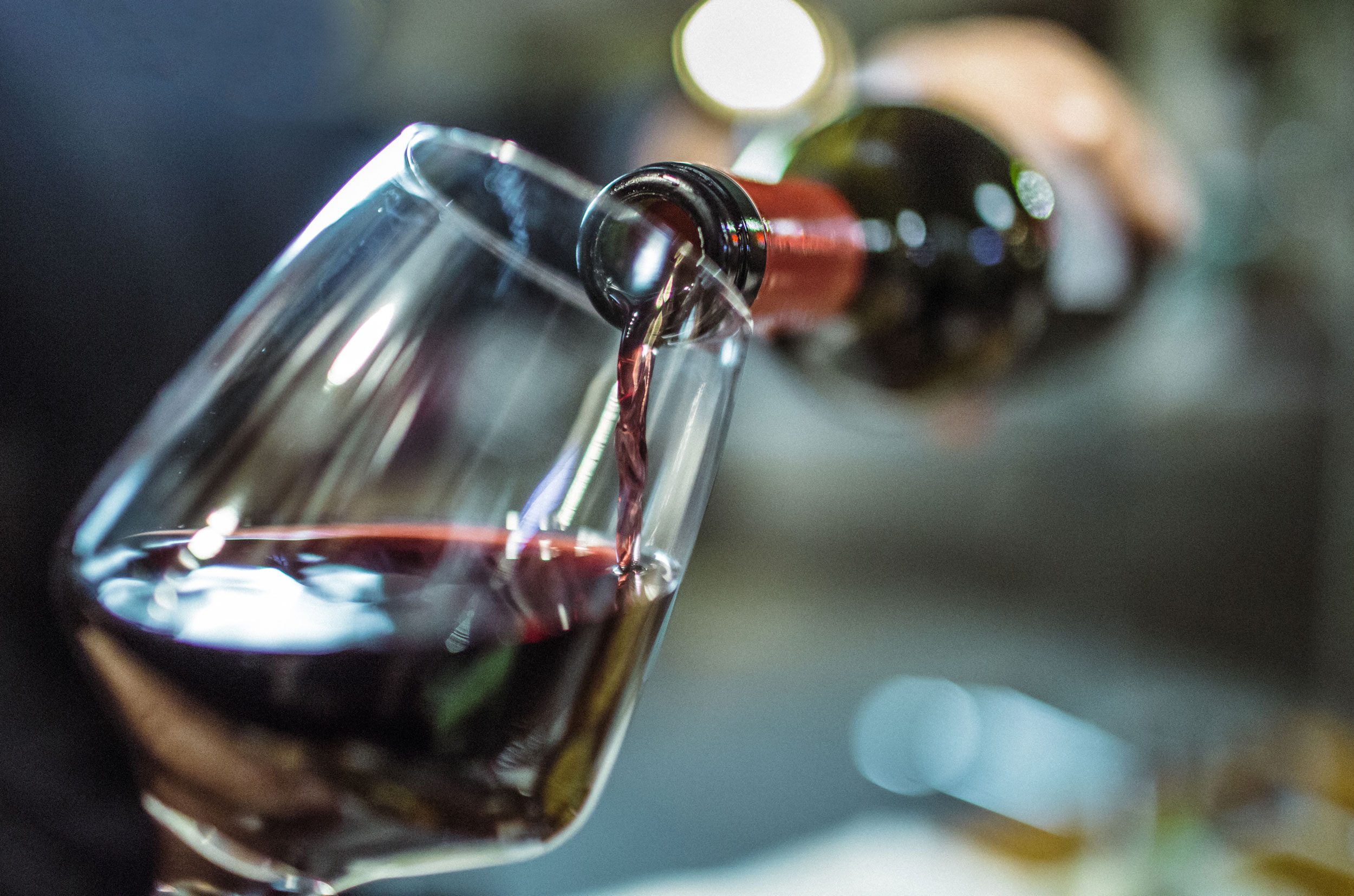Wine
Wine, a cherished alcoholic beverage, is made predominantly from fermented grapes but can also be made from other fruits or plants. Alberta, while not the first region that comes to mind when discussing wine, plays an important role in Canada's wine distribution. Many Albertans appreciate a good glass, making it an integral part of their culinary and cultural experiences. Wine's complex flavor profiles and aging processes intrigue aficionados, and its ability to pair beautifully with a multitude of dishes gives it a revered spot on many a dining table.

About
Wine's biology primarily revolves around the fermentation of grapes, a process in which yeast metabolizes grape sugars into alcohol and carbon dioxide. Different grape varieties produce wines of varying flavors, aromas, and textures. The terroir, a French term referring to the soil, climate, and topography of the grape-growing region, plays a critical role in wine characteristics. Viticulture, the cultivation of grapevines, requires careful attention to pruning, pest control, and soil health.
Alberta, given its colder climate, isn't a prime grape-growing region. However, it imports and benefits from the burgeoning wine industries of neighboring British Columbia and Ontario. These regions, blessed with milder climates and varying terrains, produce globally recognized wines. From the lush Okanagan Valley to the Niagara Peninsula, Canada has made a mark on the global wine stage. In these vineyards, winemakers experiment with hybrids and viticulture techniques to withstand the challenges of Canadian weather.
About Fruit Wines:
Unlike traditional wines made from grapes, fruit wines are derived from a variety of fruits such as berries, cherries, plums, and apples. Each fruit offers its unique flavor profile, translating to diverse taste experiences in the resulting wine. Given the versatility and regional availability of different fruits, fruit wines can be crafted in areas where grape cultivation might be challenging.
In Alberta and other parts of Canada, fruit wines have found their niche. With the province's rich agricultural heritage, producers have turned to locally grown fruits like Saskatoon berries, rhubarb, and black currants to produce wines that echo the terroir of Alberta. The fermentation process for fruit wines is somewhat similar to that of grape wines but may require adjustments in sugar or acidity levels to achieve a balanced profile.
History
Wine's history spans thousands of years, with early civilizations like the Egyptians, Greeks, and Romans valuing it in daily life and rituals. The practice of viticulture is believed to have begun in the Caucasus region (present-day Georgia) around 6,000 BCE. Over time, it spread to the Mediterranean and eventually the rest of the world.
Canada's wine journey began much later. Early settlers attempted to cultivate European grape varieties with limited success due to the harsh climate. It wasn't until the 19th century that viticulture began to establish a firm footing in the country, especially in regions like Niagara. The late 20th century saw a Canadian wine renaissance, with a focus on quality and the introduction of Vintners Quality Alliance (VQA) standards.
While Alberta doesn't produce wine, it has a storied history of enjoying it. With the rise of wine culture in Canada, Albertans have become connoisseurs, fostering a demand for both domestic and imported wines.
History of Fruit Wines in Canada:
Canada's history of fruit wine production is entwined with its agricultural roots. Before the prominence of grape wines, early settlers made wines from native fruits and berries to preserve their bounty and to have an alcoholic beverage on hand. The tradition of crafting fruit wines persisted even as grape wines gained prominence, reflecting Canada's diverse ecosystems and the resilience of its farmers.
Alberta, with its colder climate not particularly suited for large-scale grape cultivation, turned to its bountiful fruit harvests to continue the wine-making tradition. Fruit wines became a way to showcase local produce, and over the decades, they have garnered appreciation for their unique flavors and ties to the Canadian landscape.
Ways To Cook
When cooking with wine, choose quality wines that you'd also enjoy drinking. The cooking process concentrates the flavors, so using a poor-quality wine could negatively impact your dish. Typically, recipes specify red or white wine, but the variety (e.g., Chardonnay, Merlot) can influence the flavor subtleties. Always be sure to measure wine when adding to dishes to avoid overpowering other ingredients.
If a recipe calls for wine, it's typically for one of three reasons: to impart flavor, to deglaze a pan, or to act as a cooking liquid. When using wine to marinate, it helps tenderize meat and infuse it with flavor. When deglazing, wine lifts browned bits from the bottom of the pan after sautéeing, contributing to rich sauces and gravies.
Red wines pair well with hearty dishes like stews and red meats, while white wines complement lighter fare like chicken and fish. In desserts, wine can be reduced into syrups or used in poaching fruits. If you have leftover wine, consider freezing it in ice cube trays for future use in cooking. Remember, wine's alcohol content doesn't completely evaporate during cooking, so it's always wise to consider your audience when serving wine-infused dishes.
Recipe Links
Some Of Our Favourite Videos
Alberta Wine Producers
Field Stone Fruit Wines
About this producerFoods from this producer:
